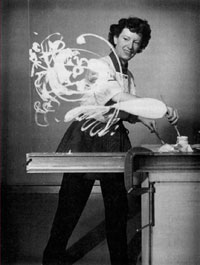Light Form Movement Sound
a research by Seppo Gruendler and Cordula Boesze completed by Sandra Naumann

The Absolute Film is not a new subject. lt is concerned with an art which
has had as logical a development as other arts, perhaps slowly but naturally.
This art is the interrelation of light, form, movement, and sound-combined and projected to stimulate an aesthetic idea.
The Absolute Film addresses the eye and the ear.
We view an Absolute Film as a stimulant by its own inherent powers of sensation. Our enjoyment of an Absolute Film depends solely on the effect it produces: whereas, in viewing a realistic film, the resultant sensation is based on the mental image evoked.
But we must tum back to painters and musicians to find the ideas which probably motivated the Absolute Film into a state of being.
Bute refers to Cezannne, the Cubists, Kandinsky and Wagner as examples for absolute art in music and fine arts.
This new medium of expression is the Absolute Film. Here the artist creates a world of color, form, movement and sound in which the elements are in a state of controllable flux, the two materials (visual and aural) being subject to any conceivable interrelation and modification.
Mary Ellen Bute “Light Form Movement Sound” Design. NY 1935
![]()

